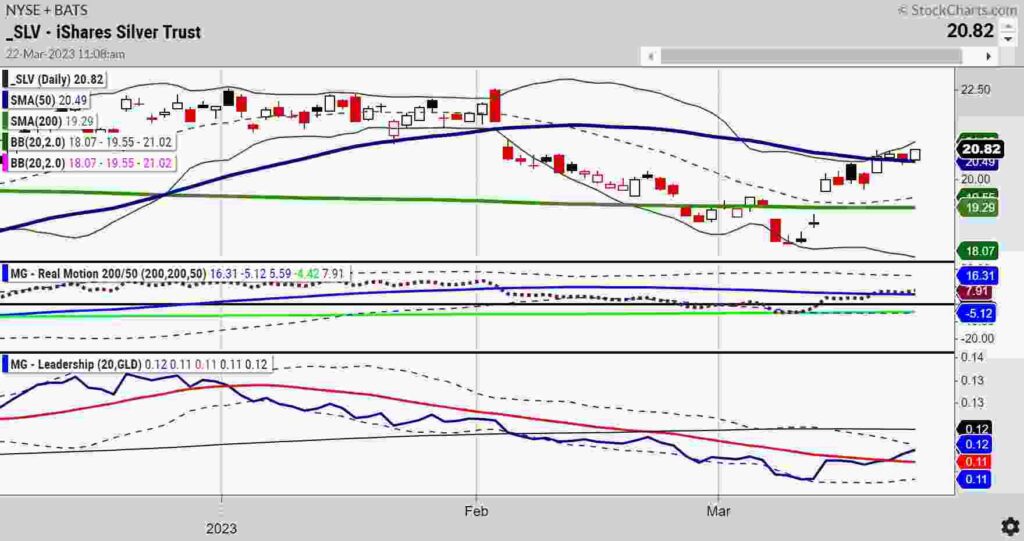Stagflation refers to a situation where an economy experiences stagnant growth combined with high inflation and high unemployment at the same time. Unlike regular and normal inflation, stagflation creates an unusual economic environment that resists traditional policy solutions. Wages, output, and employment usually decrease while prices keep rising rapidly.
- What is Stagflation?
- Inflation and its Role
- Economic Stagnation
- Historical Examples of Stagflation
- Key Indicators of Stagflation
- Economic Impacts of Stagflation
- Slowing Consumer Demand
- Rising Production Costs
- High Unemployment Rates
- Falling Asset Prices
- Overall Risky Environment
- Stagflation’s Potential Effects on Crypto
- Crypto as a Hedge Against Inflation
- But Could Be Dragged Down by Slumping Asset Prices
- Decreased Disposable Income May Limit New Investments
- Mining Costs Impacted By High Energy Prices
- Potential Flight to Crypto as an Alternative Asset
- Historical Data on Crypto in Economic Downturns
- Strategies for Investing in Crypto Amidst Stagflation
- Choosing Established Coins vs. Smaller Altcoins
- Timing Buy/Sell Decision
- Hedging With Precious Metal Cryptos
- Shorting Crypto and Going Into Stablecoins
- Conclusion
During stagflation, economic conditions tend to be decidedly negative. High inflation erodes consumer purchasing power even as joblessness remains elevated, causing households to pull back spending. Businesses struggle with declining demand and rising costs. Uncertainty around growth prospects discourages investments. Productivity and innovation stagnate without market incentives. As a result, economic output slows or contracts for prolonged periods.
Cryptocurrencies like Bitcoin and Ethereum have seen rapid adoption over the last decade as digital alternatives to sovereign currencies. The total market value of cryptocurrencies grew from nearly nothing in 2013 to over $3 trillion in late 2021. Enthusiasts see cryptocurrencies facilitating innovation and economic freedom.
However, cryptocurrencies remain controversial, given their price volatility. How broader economic conditions like stagflation might impact cryptocurrency markets warrants consideration.
What is Stagflation?
During stagflation, an economy experiences weak growth, high unemployment, and rapid price inflation. This unhealthy combination emerges through various factors:
Inflation and its Role
Inflation occurs when money supply expands faster than productive output, causing the prices of goods and services. Demand-pull inflation happens when surging economic activity strains supply chains. Cost-push inflation arises when supply shocks, like oil price spikes, increase production expenses.
Economic Stagnation
The stagnation or outright contraction of real economic output also plays a key role. Negative supply shocks, years of loose monetary policies, or sudden demand declines can stall growth independently. When coupled with mounting inflation, conditions quickly deteriorate.
Historical Examples of Stagflation
The late 1960s and 1970s brought the US economy’s worst stagflationary period when GDP shrank and inflation and unemployment rose simultaneously. Other examples include the UK and Japan in the 1990s. Many Latin American countries also experienced stagflation in the 1980s.
Key Indicators of Stagflation
To identify stagflation, economists monitor GDP, wages, joblessness, production, and consumer/business spending for signs of weakening growth. Rising prices, supply chain stresses, and labor market friction indicate mounting inflationary pressures. As these trends converge and persist, stagflation emerges.
Economic Impacts of Stagflation
Stagflation imposes considerable difficulties across all sectors of the economy. Even as businesses face surging costs and labor market friction, consumer demand weakens under inflationary pressures. The combination of slowing growth and high inflation leads to falling asset values and high uncertainty – deteriorating investment conditions and economic stability overall.
Slowing Consumer Demand
One of the clearest impacts centers on consumer demand. As household budgets are strained under the rising prices of retail goods, major purchases like homes and vehicles get delayed or canceled. Moreover, the erosion of wages and incomes in real terms due to inflation severely hampers non-essential spending.
Tourism and hospitality sectors tend to suffer as vacations and dining out costs become unaffordable for the average consumer. This drop-off in consumption and expenditures ripples across industries, constraining revenues and growth.
Rising Production Costs
On the supply side, production costs surge for manufacturers, energy producers, farmers, transportation providers, and other services. Companies facing pricier raw materials, larger wage bills, higher borrowing rates, and disrupted logistics then pass those costs onto consumers.
Supply struggles to keep up with industry demand, applying further inflationary pressures throughout the economy. Small and medium businesses with thinner profit margins bear the brunt of these cost increases.
High Unemployment Rates
As firms experience declining profits, job and wage growth stagnate accordingly. Mounting business uncertainties around growth prospects also constrain hiring, even for highly profitable companies. Younger and lower-skilled workers face greater challenges securing employment amidst weak job creation and elevated competition. The persistence of high unemployment and underemployment also weighs substantially on consumer sentiment.
Falling Asset Prices
Asset values usually retreat under stagflation, from housing and stocks to commodities like oil and metals. Combined anxieties around both surfacing inflation and slowing growth motivate larger market corrections. Real estate and equities often experience protracted price declines for years as investors flock toward safe-haven assets. The notable exception comes from gold and other precious metals, whose values partially hedge against high inflation.
Overall Risky Environment
In totality, stagflation fosters tremendous uncertainty and volatility across markets while elevating insolvency risks for overleveraged institutions. The unstable economic environment offers dim incentives for businesses to invest in expanded production or take on major new projects.
This backdrop invariably dampens entrepreneurship and innovation as well. For major multinational corporations and average households alike, stagflation leads to weakened financial positions, lower returns on capital, and substantial hardship.
Stagflation’s Potential Effects on Crypto
As an alternative asset class, cryptocurrencies face considerable uncertainty around how emerging stagflation could influence their near-term outlook and longer-term adoption. While some effects may bolster the value of cryptocurrencies, other impacts pose downside risks.
Crypto as a Hedge Against Inflation
Some proponents argue that cryptocurrencies hold inflation-hedging qualities similar to gold based on traits like verifiable scarcity. Moreover, enthusiasm continues to grow around the inflation-resistant decentralized finance landscape of currencies, tokens, dApps, and protocols built using crypto networks. As buyers flock toward assets shielded from inflation, cryptocurrencies could attract inflows.
But Could Be Dragged Down by Slumping Asset Prices

However, cryptocurrencies have exhibited strong correlations with speculative growth stocks in recent market sell-offs. Under the large asset value declines accompanying stagflation, sharp near-term declines in crypto prices remain probable as part of the broader liquidation and flight toward safe-havens.
This holds particularly true for smaller altcoins with higher volatility and experimental applications. Dominant coins like BTC and ETH may experience shorter, shallower downdrafts.
Decreased Disposable Income May Limit New Investments
Surging inflation and higher unemployment limit the ability of working professionals to allocate surplus income towards speculative investments like cryptocurrencies. Based on extreme macro uncertainty and squeezed wages, average investor interest could moderate.
This may constrain the growth rate of new crypto buyers across both developed and emerging markets. The likely exceptions include high-net-worth individuals and institutional capital in search of diversification.
Mining Costs Impacted By High Energy Prices
Significantly equal, high energy prices raise environmental concerns and the costs of blockchain mining. Crypto networks like BTC heavily count on energy-intensive computing to facilitate transactions while rewarding parties with freshly minted coins.
Renewed scrutiny of crypto’s climate footprint merged with thinning mining profits may hinder adoption somehow. Transitioning networks towards less resource-heavy processes remains a work in progress.
Potential Flight to Crypto as an Alternative Asset
Investors frightened by the traditional market volatility may choose to rotate towards cryptocurrency as an option at more elevated rates proximate to other alternative assets. High expectations around decentralized finance advancing basic financial services for the underbanked continue heavily.
Crypto also pleads to risk-tolerant retail merchants, aiming to yield higher returns outside economic turmoil zones like entities and real estate. These perceived strengths may attract new finances and deliver pockets of growth amidst more comprehensive contraction.
Historical Data on Crypto in Economic Downturns
While cryptocurrencies emerged following the 2008-09 Great Recession, investors now have over a decade of data on how crypto conducts business cycle contractions and times of financial stress. Understanding decoupling and price correlations across past recessions, crises, and crashes offers context on what may recur in stagflation periods.
Review Previous Recessions and Crypto Price Fluctuations
Recently, in 2020, expanding lockdowns triggered severe liquidity shortages across markets, sending oil, equities, and crypto prices plummeting together. Bitcoin crashed over 50% in 24 hours, reaching a new heavy low of around $4,000. However, crypto recovered far faster than public equities, with BTC striking new highs at around $64,000 by April 2021.
In the mid-2010s, the commodities bearish market also saw crypto collate and separate at times. Bitcoin and crude oil sank over 70% from 2014 highs before diverging paths emerged during their recoveries. As the value of commodities stayed low, crypto powered forward through 2017 to reach new records.
Earlier episodes saw crypto remain insulated from external downturns. During 2022’s stock market corrections, the S&P 500 fell nearly 20% while BTC dropped over 70%, worsened not by economic causation alone but by bubble dynamics.
Correlations and Deviations
On balance, broader data shows that cryptocurrencies move frequently in sympathy with other risk assets like tech stocks in the face of negative volatility events and economic uncertainty. However, the flight to crypto emerges faster than the other assets, possibly owing to underlying volatility.
Moreover, established coins like BTC and ETH saw shallower declines and shorter bear market periods than junior altcoins during past slowdowns. The differences in liquidity across cryptocurrencies also produced occasional decoupling where larger market cap names weathered storms satisfactorily.
Additionally, sudden rallies and selloffs directly tied to crypto news or network events persist across business cycles and override wider trends. Occasional deviations affirm crypto’s reputation for unexpected volatility unrelated to economic cycles or stocks. However, with greater integration, these deviations may smooth out going forward.
Strategies for Investing in Crypto Amidst Stagflation
For crypto investors, stagflation’s unfamiliar macro backdrops call for tailored techniques and strategies heavily centered on downside defense and selective accumulation.
Investors seeking to endure market instability and fluctuations have several impactful options to evaluate.
Choosing Established Coins vs. Smaller Altcoins
When markets turn volatile, bigger mainstream cryptocurrencies usually perform better than smaller altcoins. The high unpredictability and experimental features of altcoins mean they can crash hard when investors pull back. However, for investors open to more risk, the special use cases of some altcoins, like decentralized finance, are still worth small speculation.
On the other hand, major coins like Bitcoin and Ethereum offer more stability due to wider adoption and liquidity. With tested utility and security, flagship cryptocurrencies often hold better value across market cycles than unproven newcomers. Checking activity on blockchains can confirm growing usage.
Timing Buy/Sell Decision
Savvy crypto traders may profit by tactically buying during temporary dips and selling peaks. But even seasoned investors can struggle to reliably time markets amid shifting conditions. With technical indicators less useful lately, accumulating assets near support levels may offer better long-term gains for belief-driven investors.
Hedging With Precious Metal Cryptos
For diversity during periods of slow growth and high inflation, precious metal-backed cryptocurrencies allow exposure tied to gold, silver, platinum, and spot prices. Decentralized alternatives without direct asset backing take this concept further.
Shorting Crypto and Going Into Stablecoins
Brave traders could consider targeted shorts on overstretched rallies to benefit in falling markets. Rotating into stablecoins like USDC or DAI during major selloffs minimizes losses until chances to reenter at lower levels return. However, such advanced tactics demand close tracking of technical metrics and fundamentals as conditions evolve.
Carefully structuring portfolios, harnessing stablecoin flexibility, and emphasizing value during downturns can empower crypto investors to endure and thrive long-term amid various environments.
Conclusion
Stagflation injects great uncertainty into still-developing crypto markets for coming years. Prices may drop soon under broader asset contractions and fleeing risk appetite. However, subsequent recoveries could occur faster than in past recessions.
The bigger question is whether runaway fiat inflation might incentivize portfolio inflows into crypto as a hedge against eroding currency values. Available data fails to forecast such outcomes reliably. Perhaps stagflation finally drives cryptocurrencies towards mainstream viability as modern haven assets. Or speculative urges could still dominate, restricting adoption mostly to transactional use.
Either way, crypto investors can weather storms by weighing fundamentals over momentum, preferring stability to speculation, and prudently buying top-tier cryptocurrencies during fear-fueled selloffs.




















